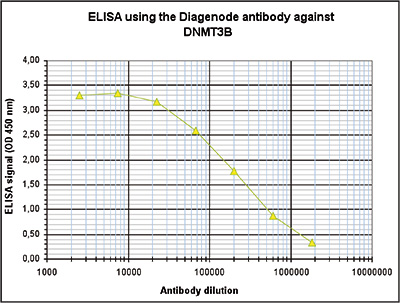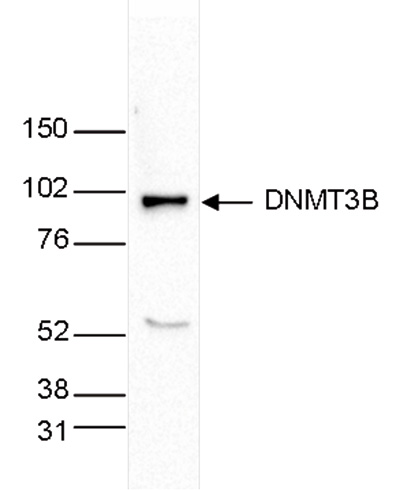DNMT3B (UniProtKB/Swiss-Prot entry Q9UBC3) catalyses the genome wide de novo methylation of CpG residues, which regulates gene expression. DNMT3B is essential for development. DNA methylation on CpG residues is coordinated with methylation of histones. Six different isoforms of DNMT3B, produced by alternative splicing, exist although isoforms 4 and 5 may not be functional due to the absence of two conserved methyltransferase motifs.





